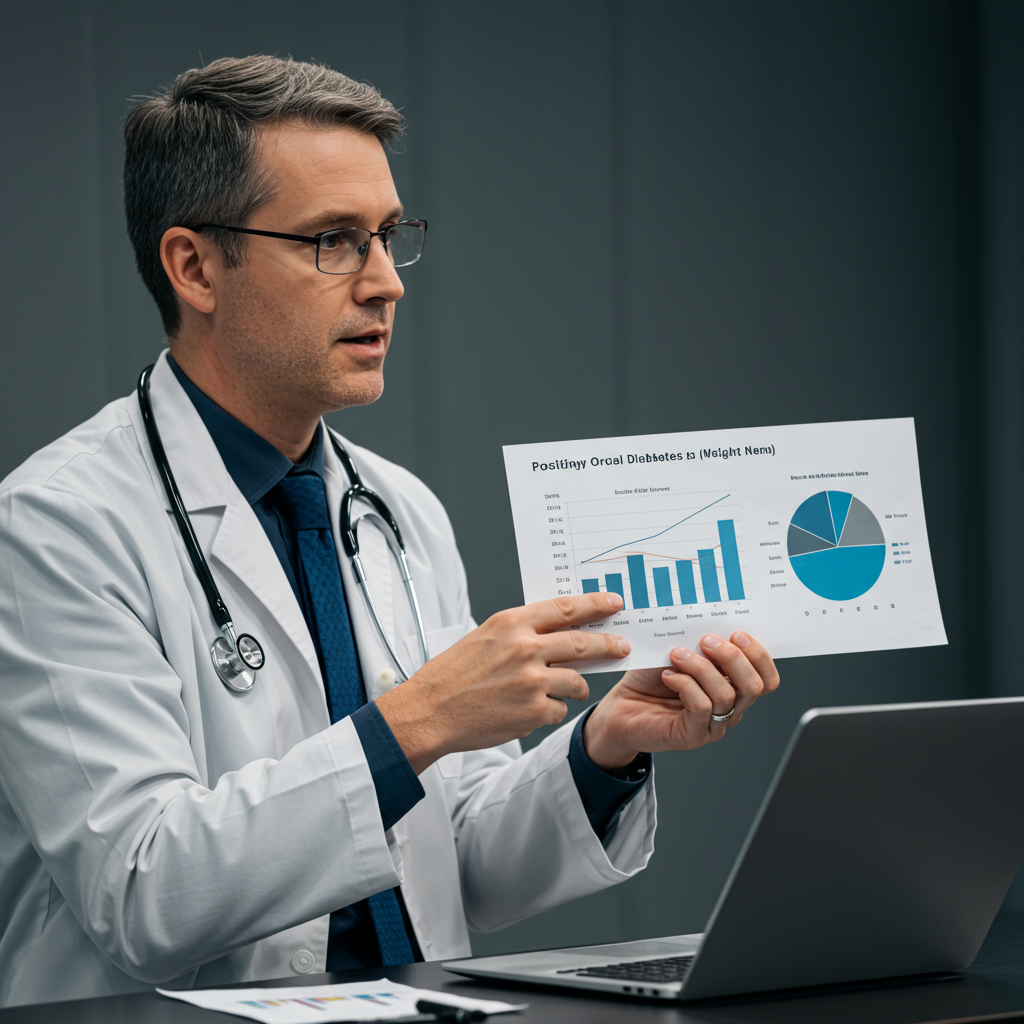Groundbreaking research presented at the American Diabetes Association (ADA) 85th Scientific Sessions and simultaneously published in the New England Journal of Medicine is heralding a potential new era in Type 2 diabetes management. Eli Lilly’s investigational non-peptide small-molecule oral GLP-1 agonist, orforglipron, has demonstrated significant reductions in A1c and clinically meaningful weight loss over 40 weeks in adults with early Type 2 diabetes.
These promising findings come from the ACHIEVE-1 trial, the first of seven planned Phase 3 studies designed to evaluate orforglipron’s safety and efficacy in over 6,000 patients across Type 2 diabetes and obesity indications.
Significant Reductions in A1c and Body Weight
The ACHIEVE-1 study enrolled 559 participants with early Type 2 diabetes (diagnosed 4-5 years prior) who had baseline A1c levels between 7.0% and 9.5% (average 8.0%) and a BMI of 23 or greater, managed solely with diet and exercise. Participants were randomized to receive once-daily orforglipron at doses of 3 mg, 12 mg, or 36 mg, or a placebo.
The results at week 40 were compelling:
A1c Reduction: All three orforglipron doses led to significant A1c reductions compared to placebo (P < .001). The average A1c drop ranged from 1.24 to 1.48 percentage points across the doses, bringing the mean A1c levels into the 6.5% to 6.7% range by the end of the study. This level of A1c reduction is critical for preventing long-term complications of diabetes, such as heart disease, kidney damage, and vision loss. Some analyses highlighted an average A1c reduction of up to 1.6% from baseline.
Weight Loss: Orforglipron also produced substantial weight loss. Participants on the active drug lost between 4.5% and 7.6% of their body weight from baseline (depending on dose), compared to only 1.7% with placebo. At the highest dose, participants lost an average of up to 16 pounds (approximately 7.9% of body weight).
Experts noted that orforglipron’s glycemic efficacy appears only slightly less than injectable Ozempic (semaglutide) monotherapy, while its placebo-subtracted weight loss efficacy in Type 2 diabetes patients in this trial was slightly greater than Ozempic.
The Appeal of an Oral, Non-Peptide Option
One of the most exciting aspects of orforglipron is its formulation. Unlike injectable GLP-1 agonists like Ozempic or Mounjaro, or the currently available oral peptide GLP-1, Rybelsus (also semaglutide), orforglipron is a once-daily non-peptide small molecule.
This chemical structure offers significant potential advantages:
Convenience: It can be taken any time of day, without the strict fasting and meal/water restrictions required for oral semaglutide absorption. This ease of use could remove a major barrier for many patients.
Accessibility: Being a small molecule rather than a peptide, orforglipron may be simpler and potentially less expensive to manufacture at scale. This could pave the way for wider access globally compared to complex injectable peptides.
- Patient Preference: The option of a pill over injections is highly appealing to many individuals.
- www.medscape.com
- www.nbcnews.com
- abcnews.go.com
Dr. Julio Rosenstock, a senior scientific advisor involved in the research, highlighted the potential for these non-peptide small molecules to become a much earlier therapy for Type 2 diabetes due to their ease of administration and potential affordability. Similarly, Eli Lilly’s CEO, David A. Ricks, emphasized that the oral formulation could facilitate easier administration and production for global use.
Safety Profile and Expert Commentary
The safety profile observed with orforglipron in the ACHIEVE-1 trial was consistent with the known effects of the GLP-1 receptor agonist class, whether oral or injectable. The most common side effects were mild-to-moderate gastrointestinal events, such as nausea and vomiting, which typically occurred during the dose escalation phase.
Discontinuation rates due to gastrointestinal issues were relatively low across the doses (ranging from 2.2% to 5.7%), comparable to rates seen with other GLP-1 drugs like semaglutide and tirzepatide. Importantly, no episodes of severe hypoglycemia were reported. Overall, discontinuations due to adverse events were between 4% and 8% with orforglipron, versus 1% with placebo. Notably, no cases of liver damage were reported in the trial, offering reassurance particularly after another company discontinued its oral GLP-1 candidate partly due to liver concerns.
Experts widely praised the achievement of developing an effective oral small molecule. Dr. Simeon Taylor called it a “remarkable scientific achievement” that “ushers in a new chapter” for GLP-1 agonists, noting the comparable efficacy to a third-generation injectable peptide.
However, some cautionary notes were raised. Dr. Amy E. Rothberg pointed out that oral medications metabolized by the liver, like orforglipron, could have their distribution and kinetics affected by a person’s weight. She suggested further study is needed to assess drug exposure both before and after significant weight loss to ensure safety and efficacy remain consistent. Additionally, similar to the existing oral GLP-1 (Rybelsus), there’s potential for drug-drug interactions, which is an area requiring careful consideration.
What Lies Ahead
The positive results from ACHIEVE-1 are just the beginning. Eli Lilly has several other Phase 3 trials underway. The ACHIEVE program includes studies evaluating orforglipron in combination with other diabetes medications like metformin and dapagliflozin, and comparing it head-to-head with oral semaglutide and insulin glargine.
Beyond diabetes, the ATTAIN Phase 3 program is specifically evaluating orforglipron for chronic weight management in individuals with obesity but without Type 2 diabetes, following promising Phase 2 data showing significant weight loss (average 9.4% to 14.7% after 36 weeks).
Lilly is moving rapidly towards regulatory submission. The company aims to submit orforglipron for FDA approval for weight management by the end of 2025, followed by submission for Type 2 diabetes treatment in 2026.
The development of oral, non-peptide GLP-1 agonists like orforglipron represents a significant step forward, offering the potential for a more convenient, accessible, and potentially less costly option for managing Type 2 diabetes and obesity in the future. While further trial data and regulatory review are necessary, these initial Phase 3 results are highly encouraging.




